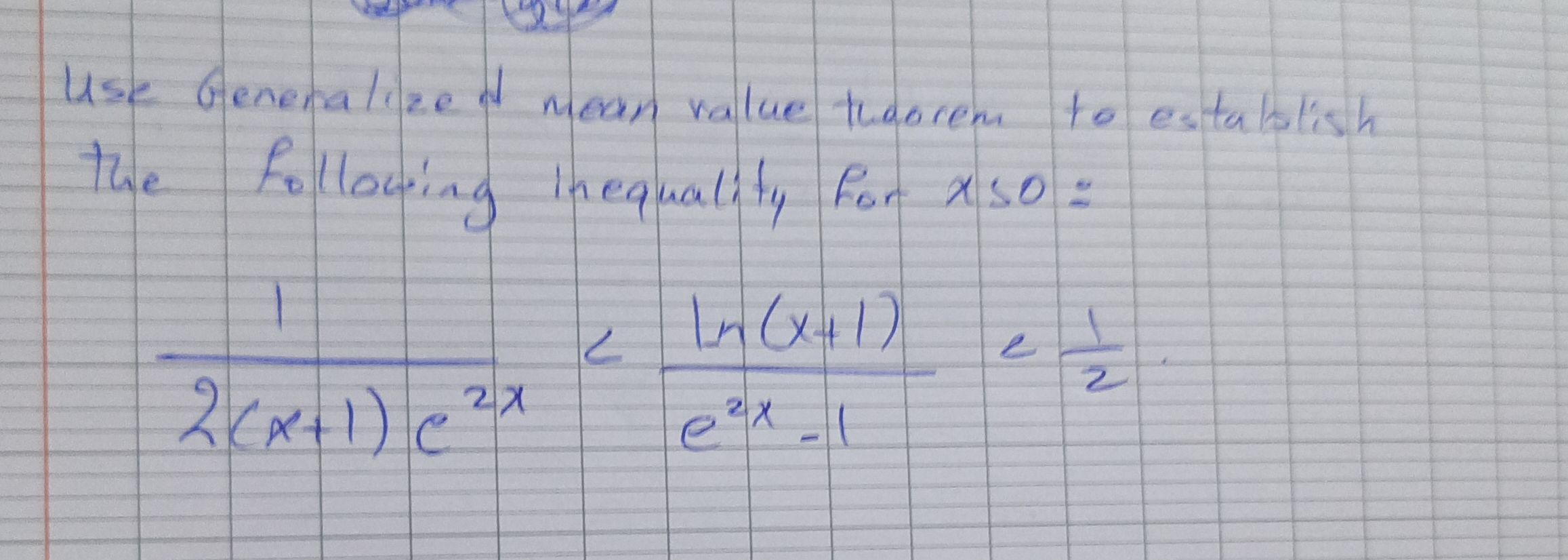Full solution
Q. Use Genenalized mean value twoorem to estalslish the following inequality for :
- Introduction: Let's consider two functions and that are continuous on the closed interval and differentiable on the open interval . The Generalized Mean Value Theorem (also known as Cauchy's Mean Value Theorem) states that there exists some in such that:For our problem, we need to choose appropriate and to apply the theorem. Let's take and . We will apply the theorem on the interval for .
- Verification of Conditions: First, we need to verify that and satisfy the conditions of the theorem. The function is continuous and differentiable for x > 0, and is also continuous and differentiable for all since the exponential function is continuous and differentiable everywhere. Thus, the conditions are satisfied.
- Derivative Calculation: Now, let's calculate the derivatives and . For , the derivative is . For , the derivative is .
- Applying Generalized Mean Value Theorem: Applying the Generalized Mean Value Theorem, we get:Simplifying the left side, we have:Now, we need to find the bounds for the right side of the equation.
- Finding Bounds: Since is in the interval , we know that c > 0. Therefore, c+1 > 1 and e^{2c} > e^{0} = 1. This means that \frac{1}{c+1} < 1 and 2e^{2c} > 2. So, the fraction is less than .
- Finding Bounds: Since is in the interval , we know that c > 0. Therefore, c+1 > 1 and e^{2c} > e^{0} = 1. This means that \frac{1}{c+1} < 1 and 2e^{2c} > 2. So, the fraction is less than .On the other hand, as approaches from the right, approaches and approaches , so the fraction approaches from the left. Therefore, we have:Since , we can conclude that:

